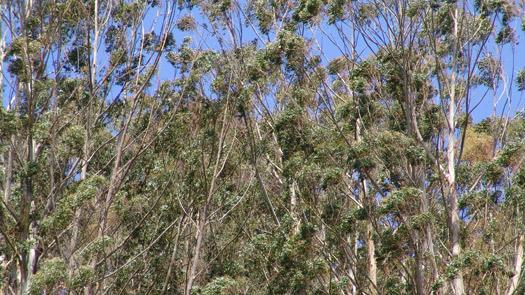 New Zealand: a land renowned for sheep, Middle Earth, stunning scenery — and innovation. While there is certainly a lot to know about this far-flung country, most of which already has me ready to pack up my family to move there, the country is also steadily building its strong reputation for advances in the field of 3D printing. From an autonomous drone delivering pizza to the smallest working drill in the world, and more serious work being done in the medical field and rocket launch systems, the country is keeping up with the latest technologies. One institution in particular has been home to a number of recent developments.
New Zealand: a land renowned for sheep, Middle Earth, stunning scenery — and innovation. While there is certainly a lot to know about this far-flung country, most of which already has me ready to pack up my family to move there, the country is also steadily building its strong reputation for advances in the field of 3D printing. From an autonomous drone delivering pizza to the smallest working drill in the world, and more serious work being done in the medical field and rocket launch systems, the country is keeping up with the latest technologies. One institution in particular has been home to a number of recent developments.
Christchurch-based University of Canterbury has come on our radar frequently lately, as the innovative researchers based there have been hard at work with additive manufacturing technologies. From a working Stirling engine to allowing students hands-on interaction with reproductions of rare artifacts to a prosthetic for a little penguin, the broad-ranging talents of those working in conjunction with UC have led to some remarkable developments. And now, a researcher from the university has set his sights on putting bioprinting to use to create synthetic wood.
David Leung, PhD, an associate professor in biotechnology with an impressive background in research, has recently been awarded with funding from the New Zealand government for his proposed project. Drawing from proven research of bioprinting using green algal cells, Leung hopes to expand upon this principle to use cells from living eucalyptus trees in order to create wood materials — no deforestation required. Eucalyptus is an important part of New Zealand’s forestry industry, and a sustainable approach to acquiring this material would produce significant ripples.
Leung’s project is set to receive funding of $255,000 over a three-year period as part of New Zealand’s Science for Technological Innovation (SfTI) National Science Challenge, which today announced 10 disruptive technology-developing seed projects to receive a total of $826,000 in funding this year. The synthetic wood project aims to allow for a sustainable, non-environmentally harmful biomaterial that would cut down on the need for the harvesting of trees, following one of the Challenge themes by focusing on “Materials, Manufacturing and Design”.
The full project description for Leung’s project, entitled “Enabling sustainable economic development with advanced additive manufacturing of wood”, from the SfTI Challenge explains:
The call for projects in the Materials, Manufacturing and Design category notes:“There is huge economic potential in harnessing the enabling three-dimensional (3D) printing technology in product manufacturing. Although challenging, there is potential to use live cells as an advanced manufacturing material in a yet-to-be invented, new industry.
The principle of 3D printing live plant cells (bio-printing) has recently been demonstrated with live green algal cells. It is possible that other types of plant cells, such as the wood-forming cells of eucalyptus trees, could be used as bio-printing materials. Hence, it is a potential, socially acceptable opportunity for sustainable economic development derived from native forests.
The objective of this project is to manufacture a wood product (a non-living 3D structure) without the need for the destructive harvesting of trees.
Live eucalyptus tree cells will be prepared specifically for bio-printing. They will be physiologically primed in a 3D structure in the biotech lab at the University of Canterbury (without any genetic modification) to be capable of responding to the appropriate triggers for transformation into a principal wood cell called a tracheid elements cell.
The changes in the cells will be studied in relation to the characteristic morphological features and chemical properties of tracheid elements cells using various microscopic, histochemical staining and fluorescence techniques.
If successful this research would be among the most significant scientific advances towards the realisation of the full potential of 3D printing. The manufacturing sector would have a new, sustainable and advanced biomaterial for developing niche products in a New Zealand context.”
“NZ has a small and vibrant hi-technology processing and manufacturing sector. This theme will advance the sector’s reputation as a leader in smart, green manufacturing processes and materials leading to products, services and processes. The aim is to leverage New Zealand’s brand and gain a premium in export markets.”
By focusing on the use of bioprinting for a sustainable material, Leung’s project answers the Challenge call. Through the use of cells from living eucalyptus trees, Leung is demonstrating the requisite “advanced knowledge of materials and development of novel materials ideally leveraging New Zealand’s unique expertise and flora and fauna” as well as “new and improved manufacturing and processing technologies allowing enhanced sustainability and/or enabling new products” and his “use of advanced design thinking at all stages of product, service and process development” — all of which fulfill requirements for what the Challenge notes as requirements for research proposals. Other requirements from the Challenge include that these “processes, services and products”:
- have high value, relative to shipping cost
- target existing markets and create new niche global markets
- allow mass customisation and/or relatively frequent product changes.
Leung’s project rose to the occasion splendidly, as evidenced by its selection as one of the top 10 submissions.
Today, September 1, Science and Innovation Minister Steven Joyce announced the selected projects on behalf of the SfTI Challenge team.
“The pace of technology change is accelerating so it’s important that our high-tech firms have access to the right know-how to build the sorts of innovative products that will help them to succeed in highly competitive global markets,” Minister Joyce noted. “These new seed projects will create new knowledge through fundamental research that will support firms to contribute to the evolution of New Zealand’s growing high-tech economy.”
 As is noted on the Challenge page with the full list of selected project descriptions and panel members:
As is noted on the Challenge page with the full list of selected project descriptions and panel members:
“Seed projects involve fundamental science that is high risk but high reward and could, if successful, help shape the direction of Challenge research and play a key role in the evolution of New Zealand’s, high-tech future economy.
In 2016 we are funding 10 seed projects investigating everything from the science behind supercharging the capacity of lithium batteries by up to ten times, to bio-printing live plant cells with the aim of creating a new, sustainable industry for synthetic wood manufacture.
These exciting and ambitious projects will be undertaken over one to three years across five universities, one crown research institute, and two independent research organisations. If successful, seed projects may become part new spearheads projects in one of our portfolios.”
Selected seed projects offer not only innovation, but indelible ties to New Zealand itself, representing a broad swath of the best minds in the nation. Should Leung’s project find success, it is set to redefine uses for 3D printing in New Zealand — as well as establishing a wholly new industry altogether. The importance of high-tech advances in arenas including ecological preservation and sustainable materials cannot be overstated, and bioprinting synthetic wood serves as an ideal example of what may be possible. Discuss further over in the Bioprinting with Wood forum thread at 3DPB.com.
[Source: Scoop]Subscribe to Our Email Newsletter
Stay up-to-date on all the latest news from the 3D printing industry and receive information and offers from third party vendors.
You May Also Like
Gorilla Sports GE’s First 3D Printed Titanium Cast
How do you help a gorilla with a broken arm? Sounds like the start of a bad joke a zookeeper might tell, but it’s an actual dilemma recently faced by...
Nylon 3D Printed Parts Made More Functional with Coatings & Colors
Parts 3D printed from polyamide (PA, Nylon) 12 using powder bed fusion (PBF) are a mainstay in the additive manufacturing (AM) industry. While post-finishing processes have improved the porosity of...
$25M to Back Sintavia’s Largest Expansion of Metal 3D Printing Capacity Since 2019
Sintavia, the digital manufacturing company specializing in mission-critical parts for strategic sectors, announced a $25 million investment to increase its production capacity, the largest expansion to its operations since 2019....
Velo3D Initiates Public Offering in a Bid to Strengthen Financial Foundations and Drive Future Growth
Velo3D (NYSE: VLD) has been among a number of publicly traded 3D printing firms that have attempted to weather the current macroeconomic climate. After posting a challenging financial report for 2023,...































